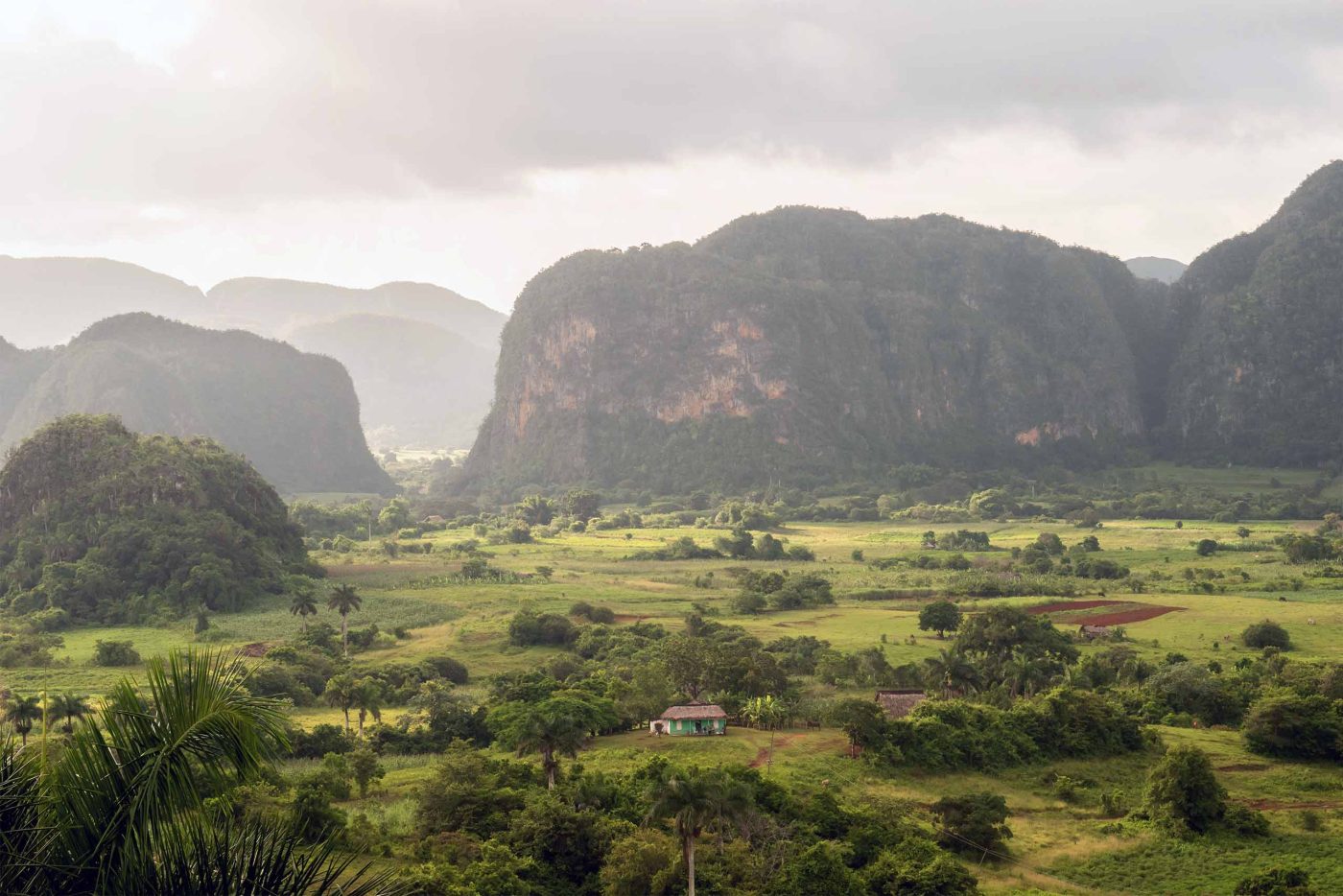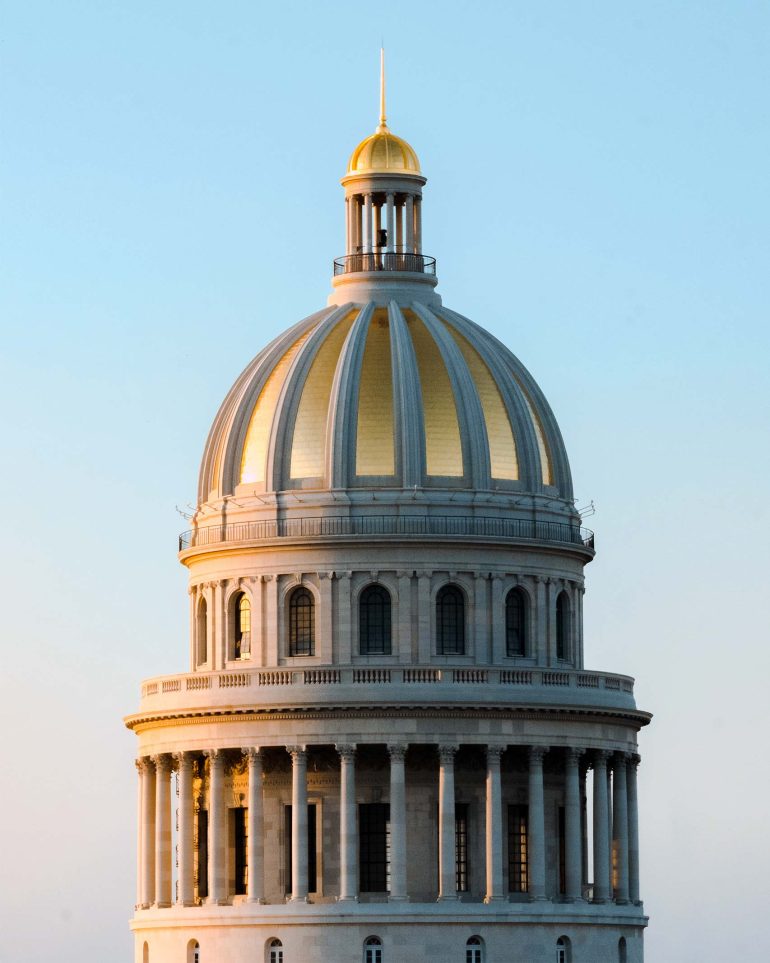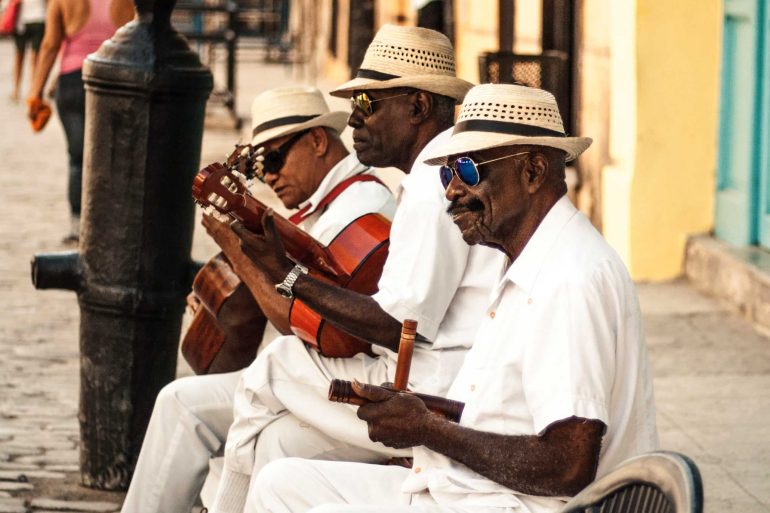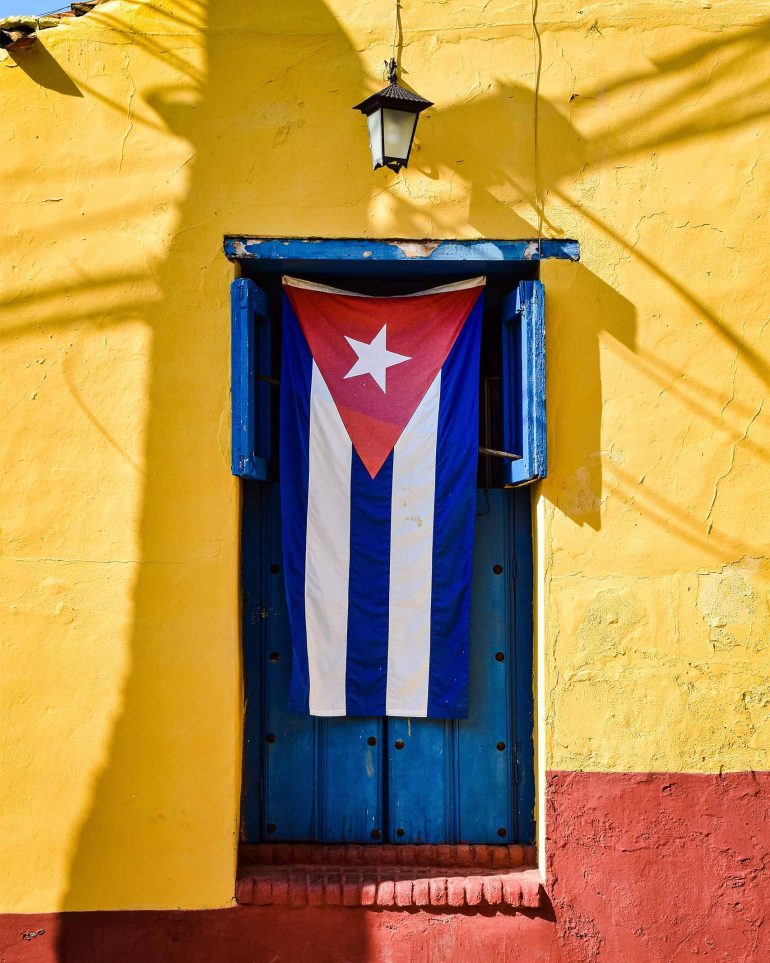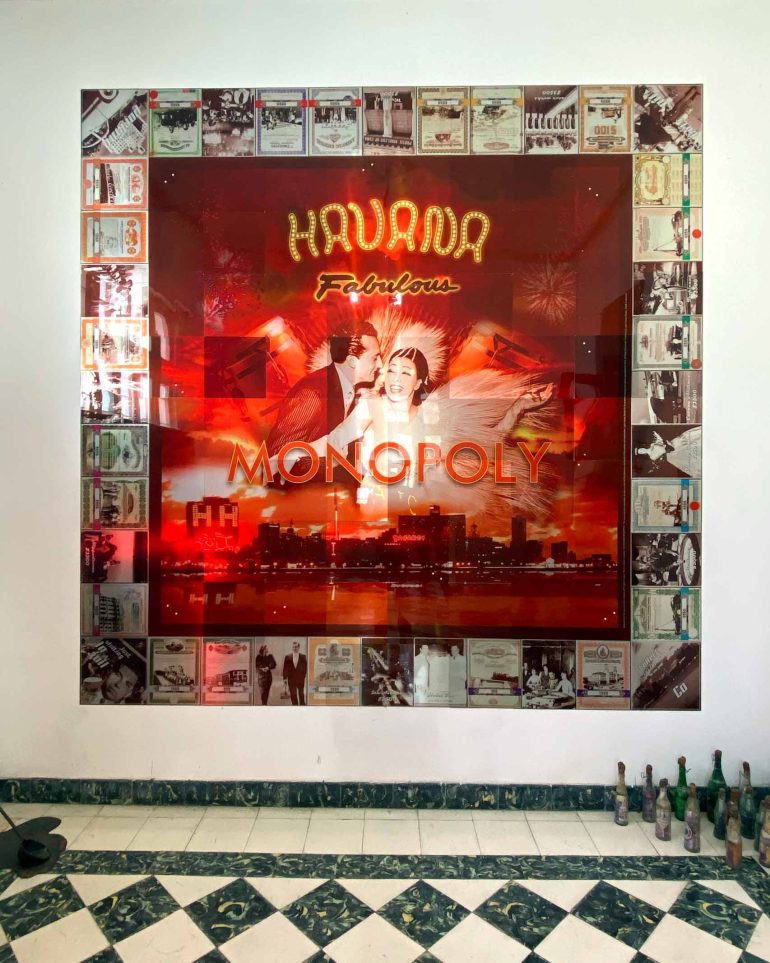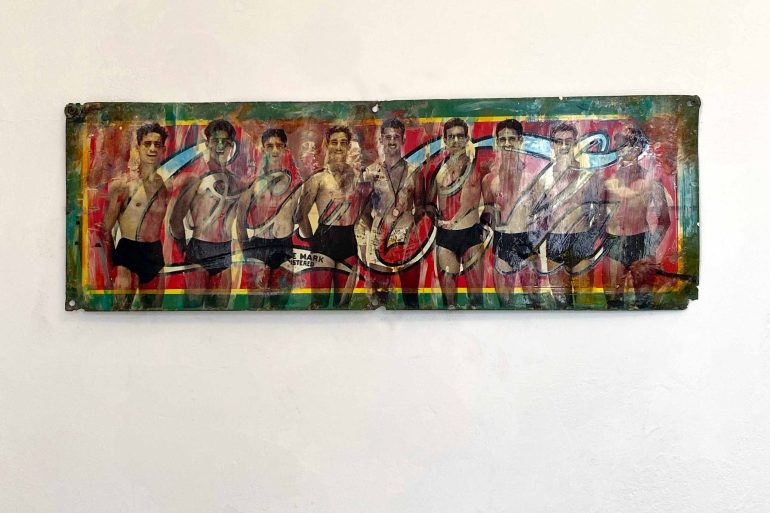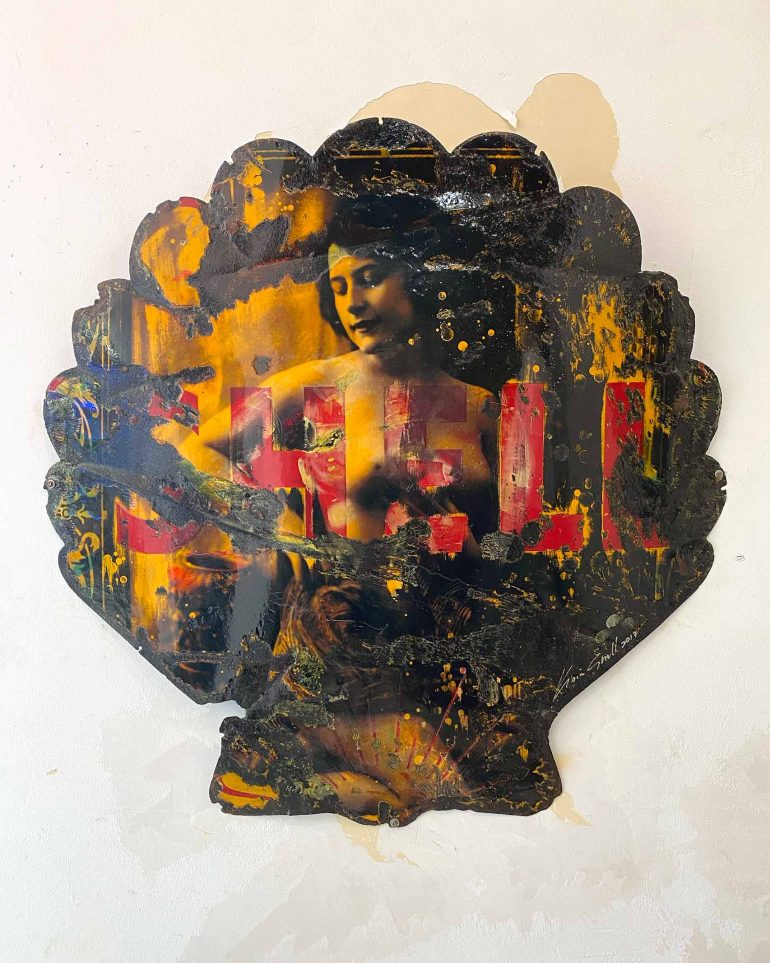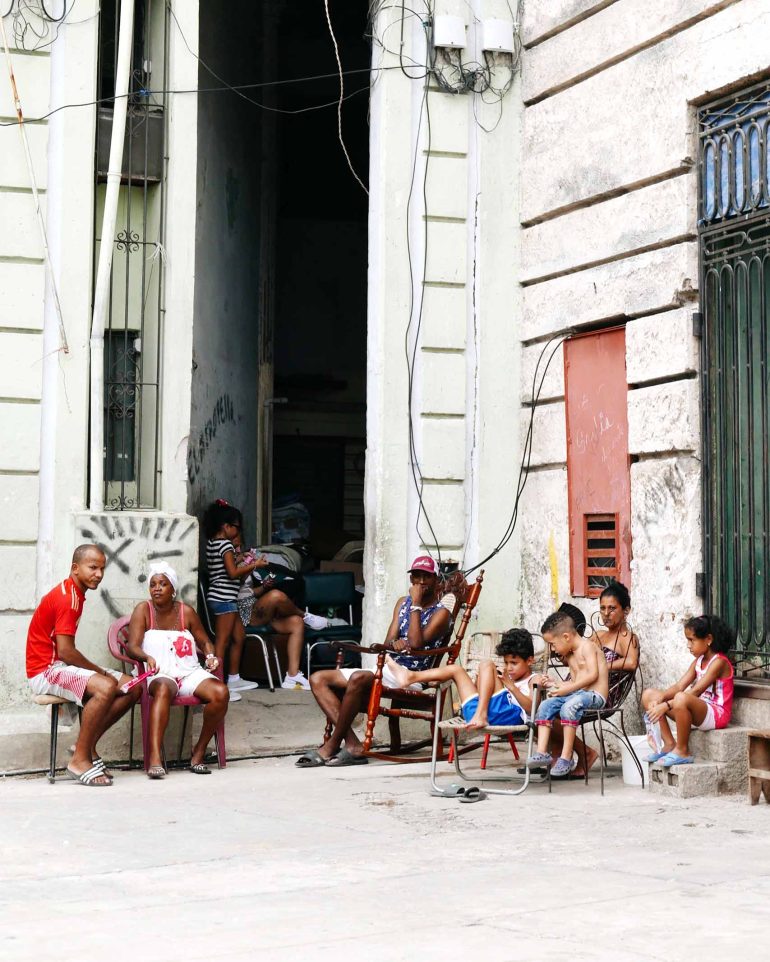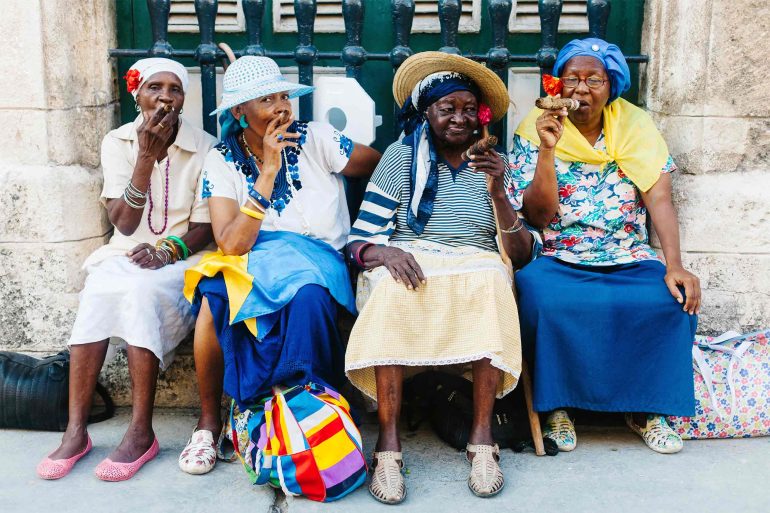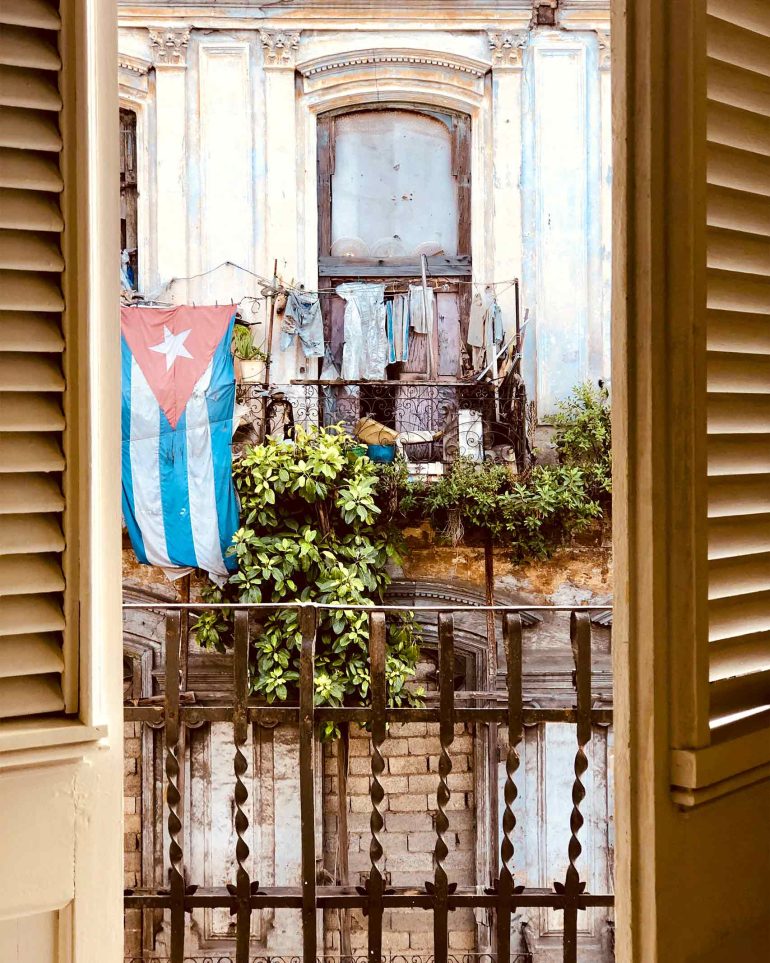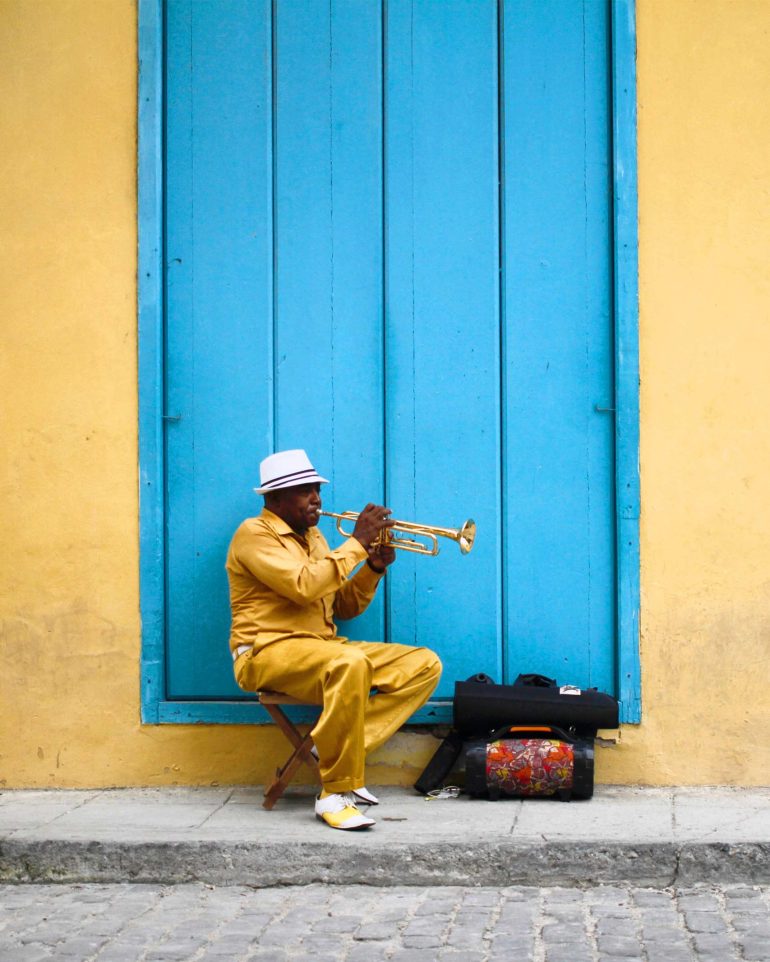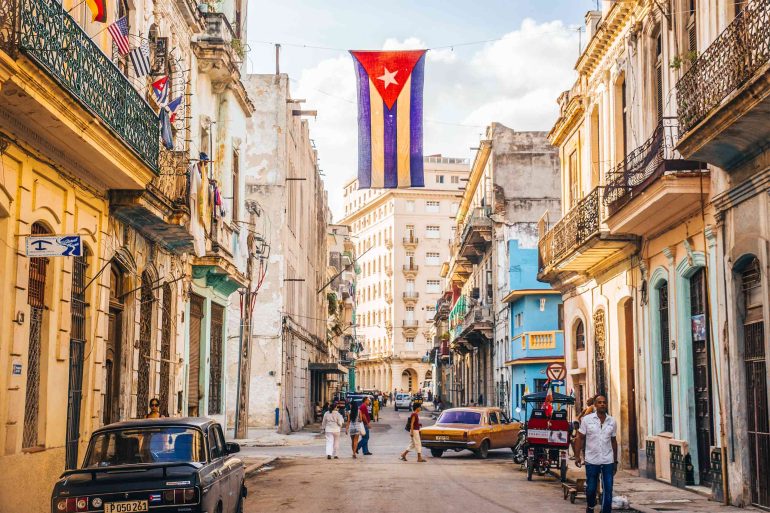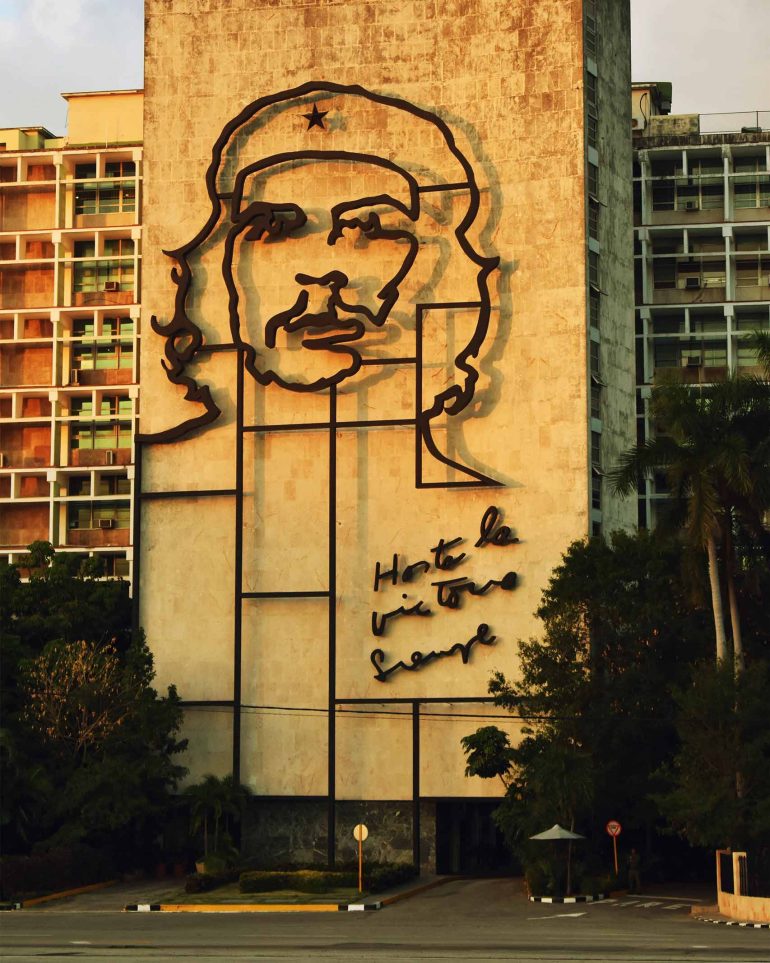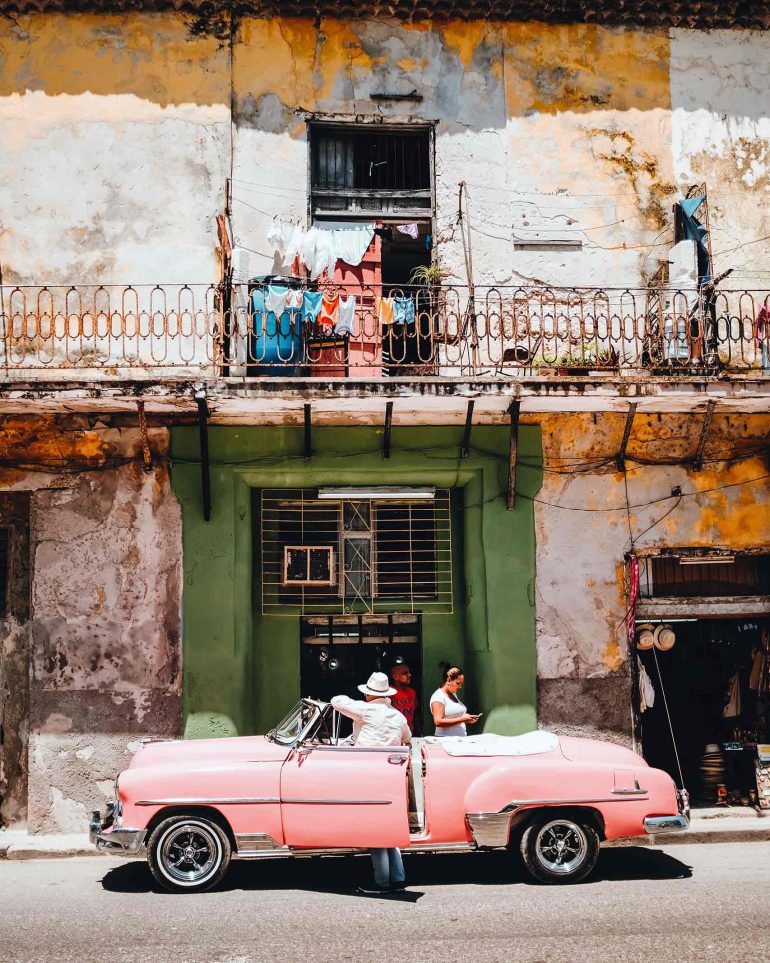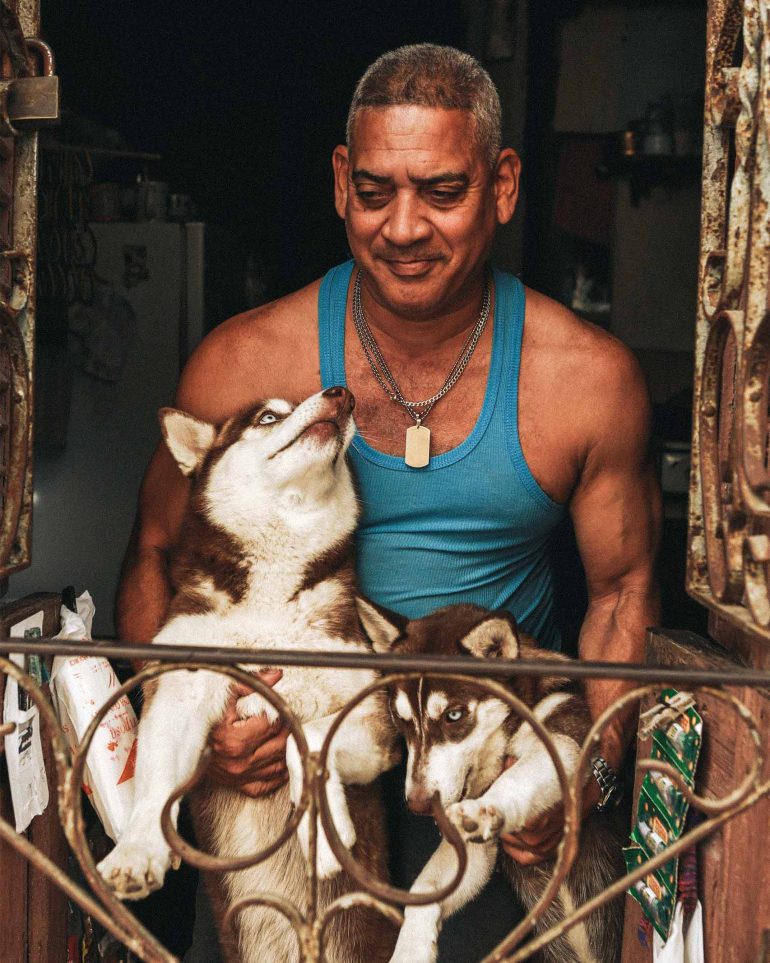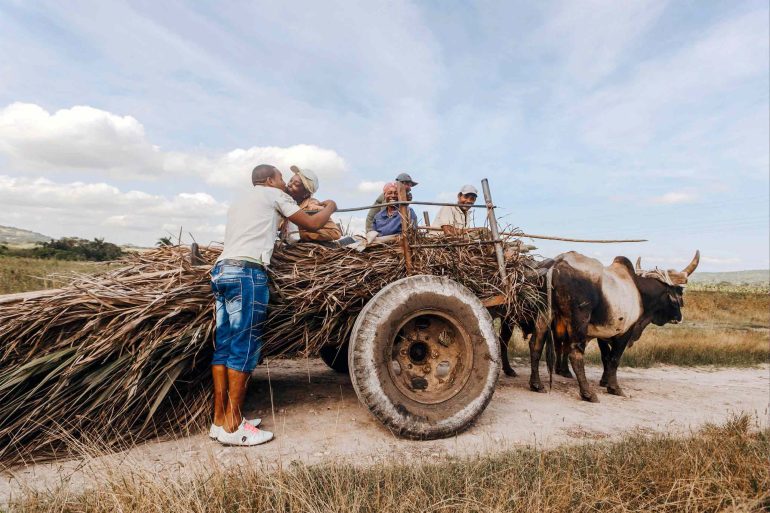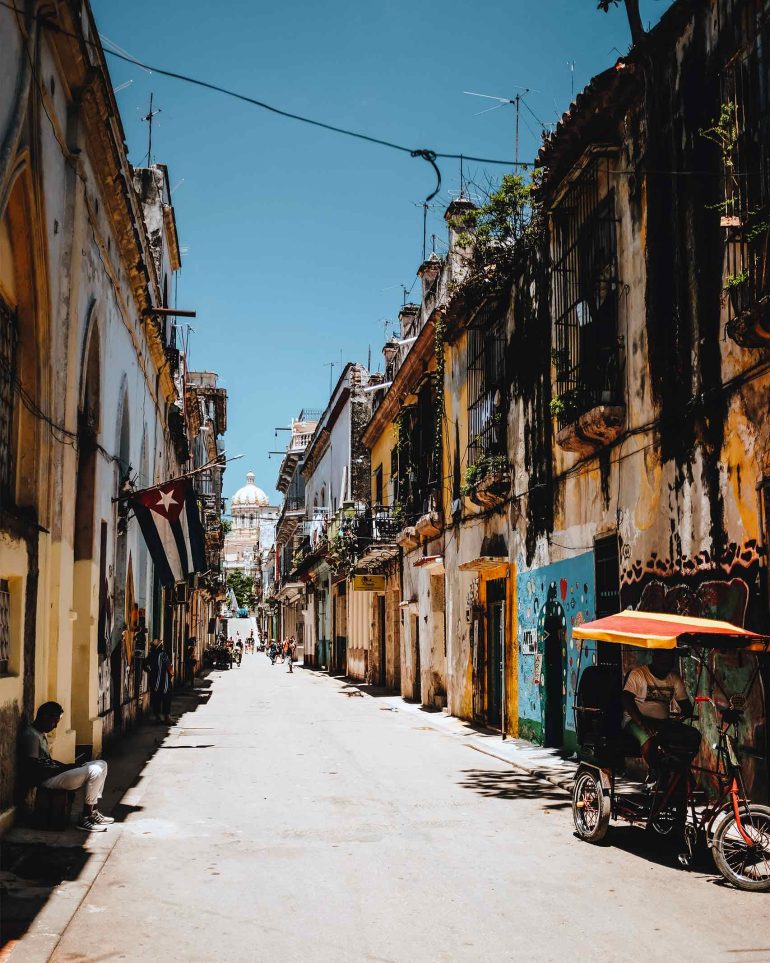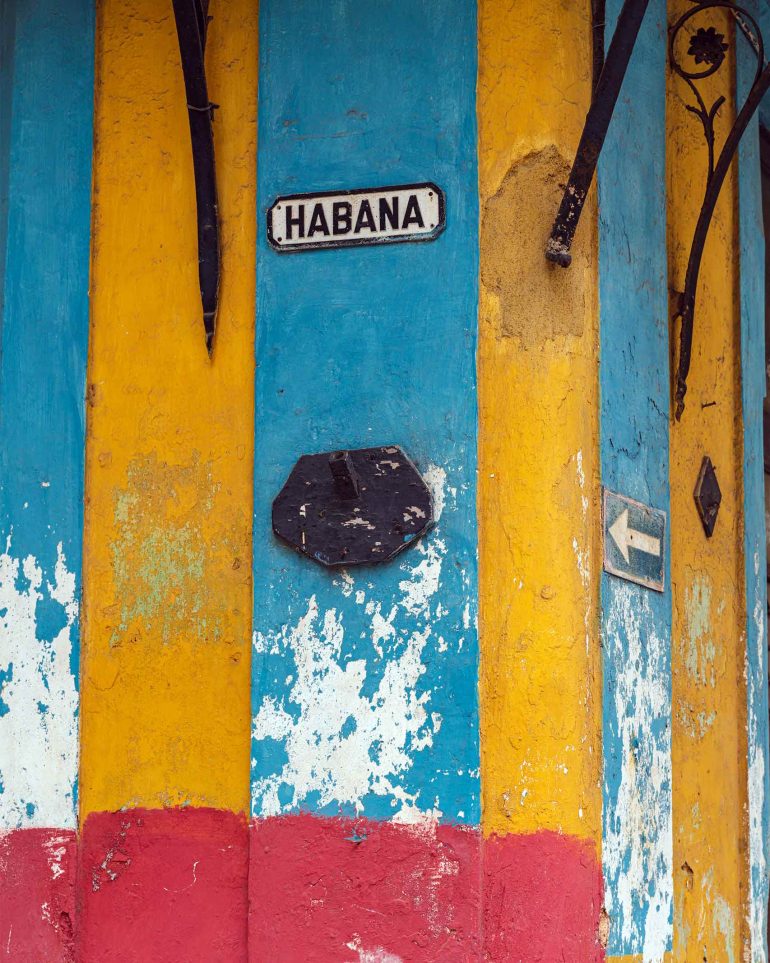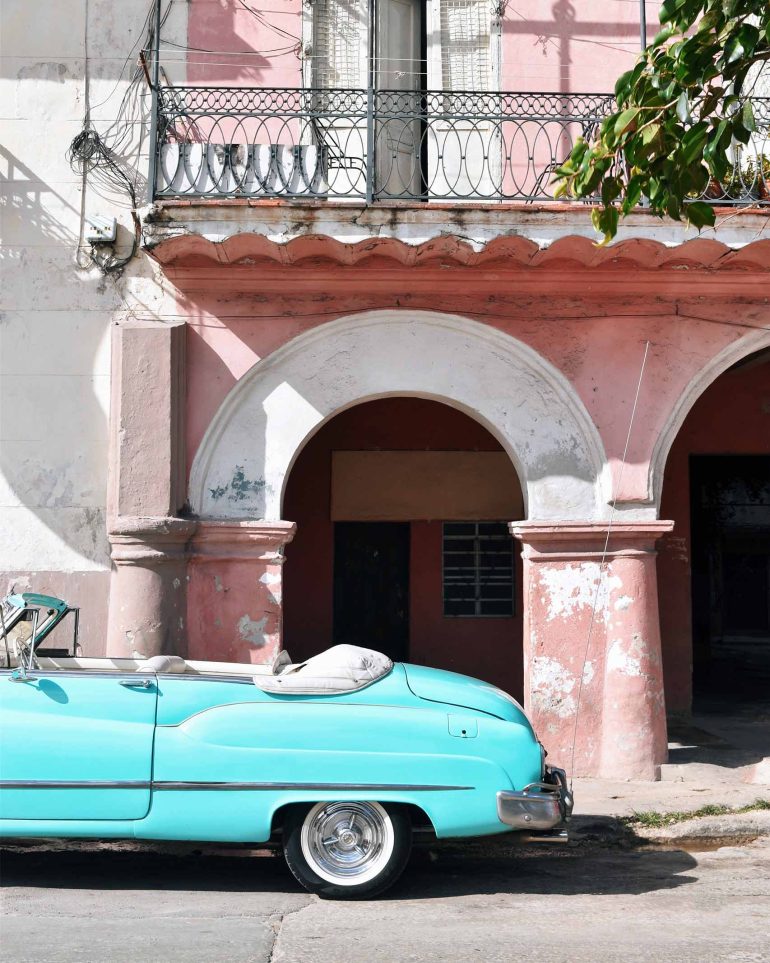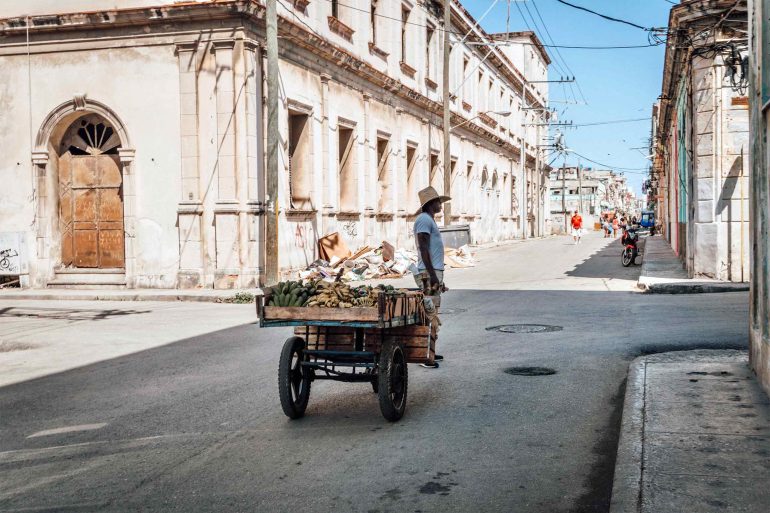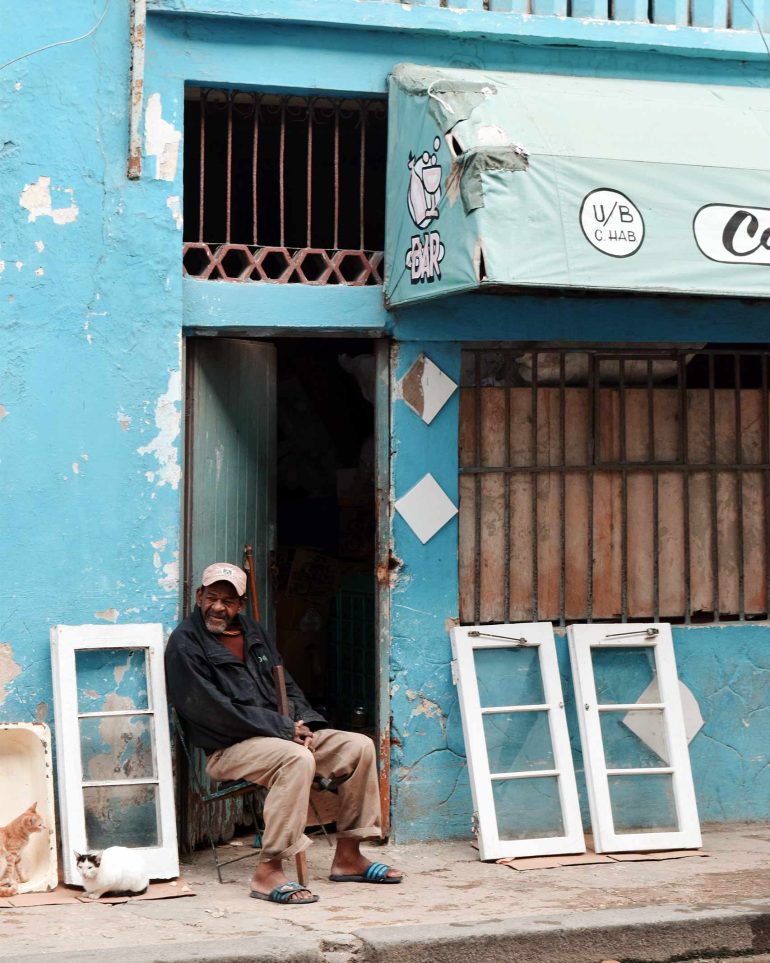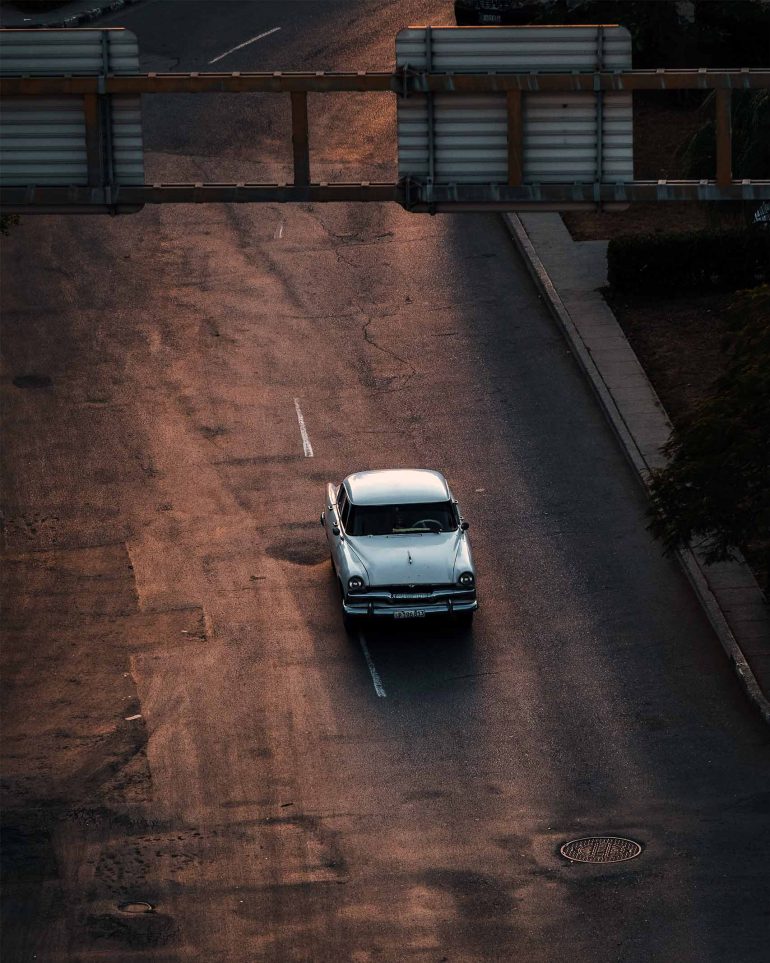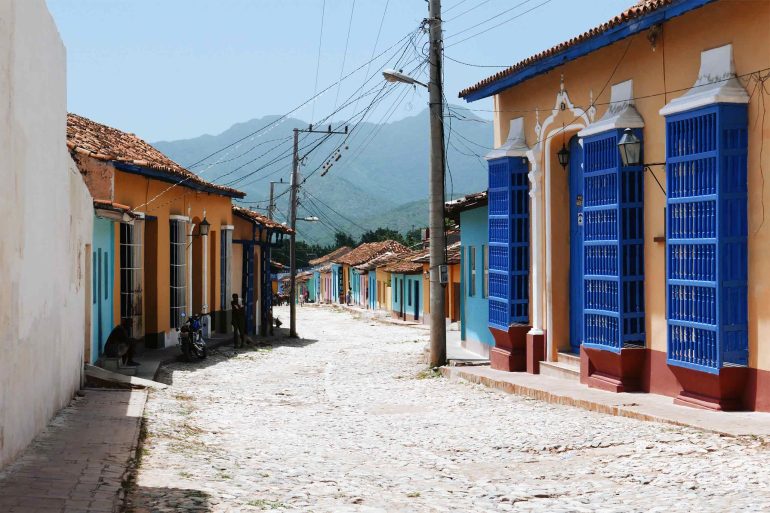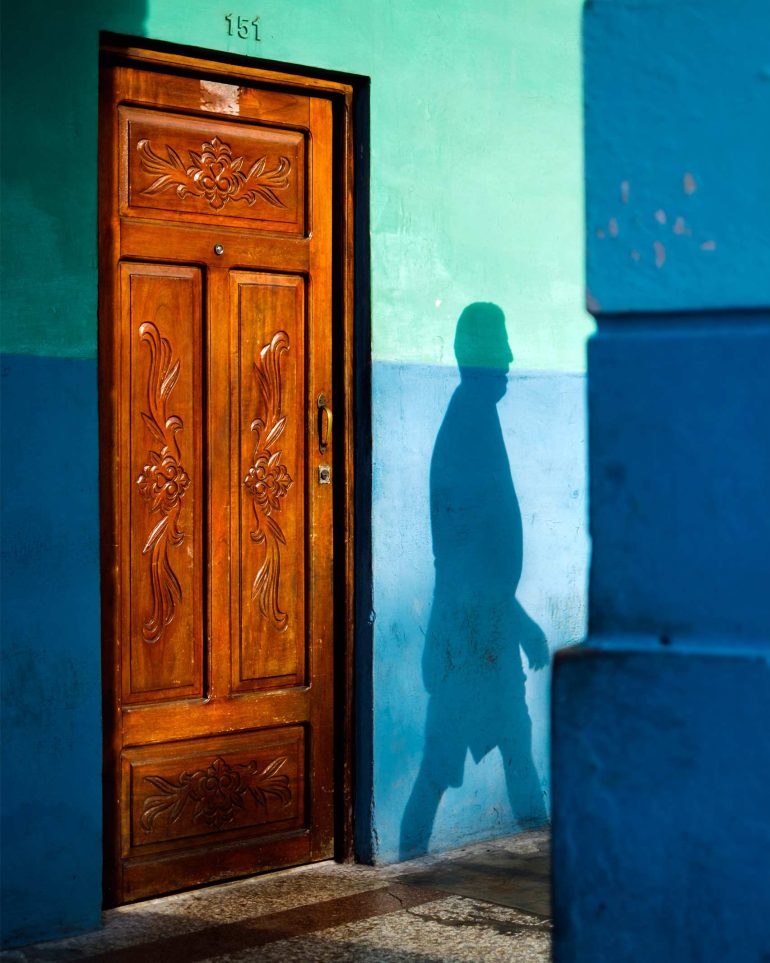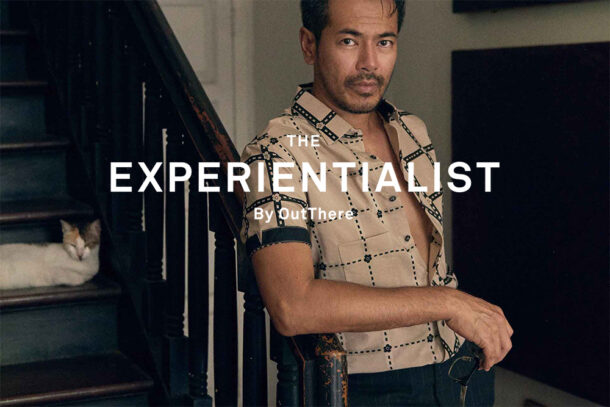If ever there was a sure-fire way of sparking controversy, it was by a visit to Cuba. Jay-Z and Beyoncé did it. So did Frank Sinatra – multiple times. Never have we been so keen to get a bead on the country, on our own terms.
I travel into Cuba the ‘wrong way in’, forgoing the usual arrival into its vibrant capital Havana, pertinacious in the idea that I would ‘do Cuba differently’.
They say the island is shaped like a crocodile. If Havana is at its coccyx, the city of Holguín – where I begin my journey – is its left eye. So it’s pretty much the other end of the country in relation to the capital, a 10-hour drive if heading there directly on the seemingly eternal Carretera Central de Cuba highway, or the ‘croc’s’ spine.
To get to Cuba, I take a similar course to that of the colonialist Christopher Columbus at the end of the 1400s, when he opened the floodgates for the five-century pillage that was to come at the hands of the Spanish. The history books say that his very words on seeing Cubanascnan (the pre-colonial name for the country) was that it was the most beautiful land that human eyes had ever seen. I guess I am curious to see if he is right.
As the small plane banks over the unfathomably turquoise sea above the palm-fringed white sand and dense green jungle, I nod in agreement with Columbus. Then, on landing at Frank Pais airport, I’m faced with the Cuba I had always imagined: a Soviet-era military air strip and the bedlam of the fluorescent-tube-lit terminal, where my fellow passengers are infeasibly laden with 10 bags each over their allotted allowance of American branded contraband.
There are dramatic scenes of tearful families reuniting, as if for the first time in decades. Dozens of imperfectly perfect máquinas (vintage cars) await passengers outside. It’s beautiful, in a different way. Arriving here is like something out of The Twilight Zone, as if I’d travelled back in time, a sensation made even uncannier by the fact that it all reminds me of the Borneo of my childhood, the intense humidity and lush greenery of the landscape included.
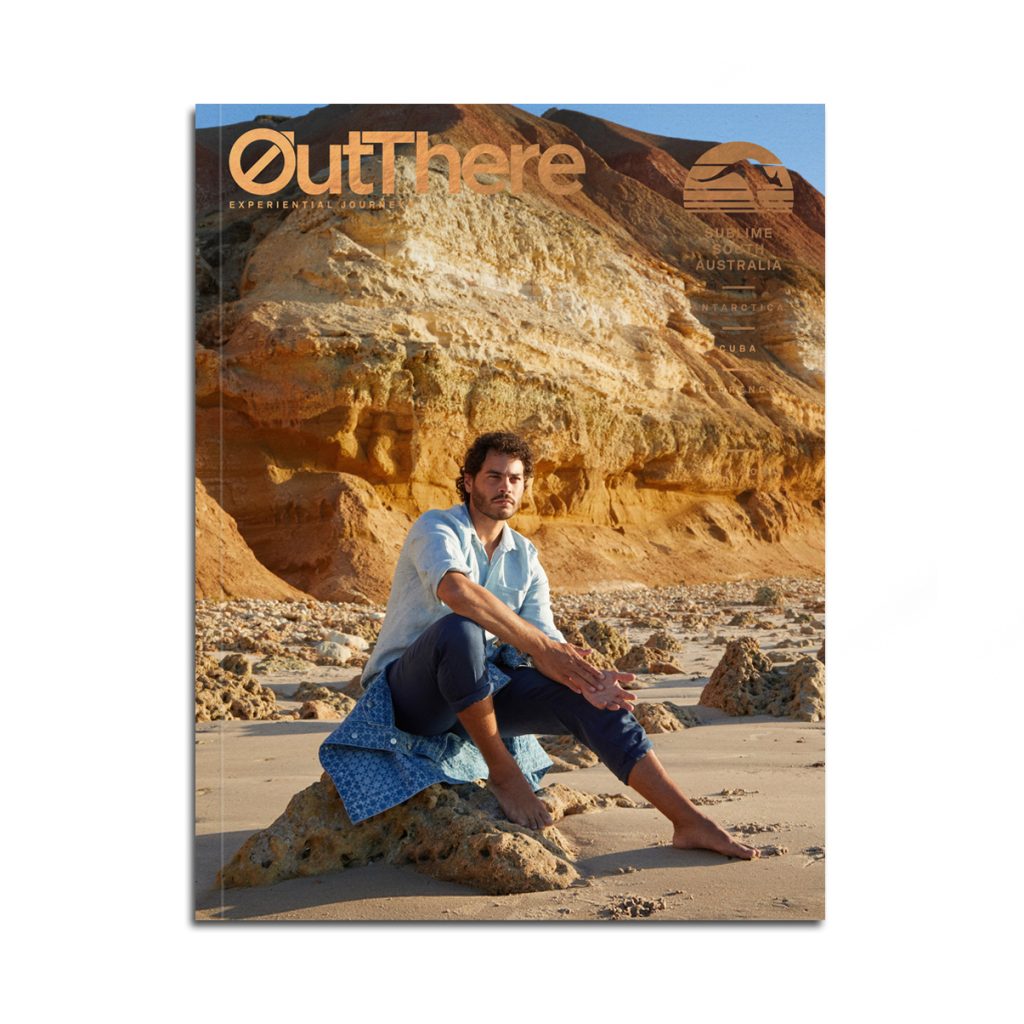
This story first appeared in The Sublime South Australia Issue, available in print and digital.
Subscribe today or purchase a back copy via our online shop.
Over the next seven days, I’m to drive towards Havana, but not without making some significant detours and pit stops. The goal? To explore an island I only know in books. And drive I will, covering over 600 miles/1,000km of dusty Cuban roads and highways in a week, giving me an appreciation of the countryside and its way of life.
Out here, locals would be privileged to own an old jalopy; most people still get around by horse/cattle and cart or they hitch-hike. Traffic rumbles (or clip-clops) along at no more than 40mph/65kmh. Disused railway lines intersect busy roads. They’re overgrown with wild foliage, yet my driver stops and looks both ways every time we cross one.
People here live simply, in old houses, resourcefully decorating their spaces with whatever they have, their small gardens lined with pots made out of old oil cans. Colour is significant. Buildings are painted in vibrant hues. Most have running water – a phenomenon that only came in the early noughties. Electricity, on the other hand, is hit or miss, and load-shedding is commonplace.
From the window of the car, it’s easy to describe what I see as abject poverty. But that’s all relative. It’s not the same kind of gut-wrenching penury you see in India or parts of Africa. Here, people are not considered ‘multi dimensionally poor’. Because of Cuba’s socialist political system – which is, admittedly, complex – the population has access to basic infrastructure, education (my driver, for instance, has a PhD in constitutional law) and healthcare (a swift Covid response and the rapid development of their own vaccine meant that Cuba fared well in the pandemic).
Food is available, especially here in the hectares of farmland where it grows. If you like beans, bananas and rice, there’s quite a bit of it, but don’t imagine that you’ll easily happen upon a head of lettuce or a supermarket. But even if there were a grocery store, most rural dwellers have very little to no monetary wealth to be able to shop in it.
As such, people can’t even access the simplest of ‘luxuries’: things we take for granted, such as soda, candy, cheese or even bars of soap or an umbrella. If they are actually putting money away, they’re saving up for the holy grail – a smartphone; something that has become so crucial here.
Cuba’s sociopolitical and economic intricacies are perplexing to any outsider like me who grew up with capitalism, but it really puts into perspective what privilege is, particularly as I arrive in Cayo Guillermo, at the country’s only luxury beach resort. Part of the Jardines del Rey archipelago, it’s a heavenly coastal haven with some of the clearest water I’ve ever seen. Squint and you may mistake it for the Maldives, complete with overwater villas, pristine cabana-lined white beach and ‘Canadian-style’ breakfasts (the northern North Americans being Cuba’s biggest, all-inclusive beach-holiday market).
At my international brand-named resort, they give you high-end hospitality within their means – cola that’s not Coca and pea-sized knobs of butter, all at the pleasure of a government-controlled exchange rate that fetches three times lower than you’d get on the streets. No cash or popular cryptocurrencies are accepted here, which means that prices are high, even for us infidel capitalists. So, for the vast majority of Cubans, staying here is just unattainable, unless, of course, you are part of the burgeoning middle class with family who have amassed relative wealth abroad.
Travelling under the radar
Over in the town of Trinidad, I’m enthralled by the spectacular history and culture of its UNESCO World Heritage Site. A preserved, village-size old town built on blood wealth made from sugar production, it’s a spit of many Spanish colonial towns in Latin America. It begs me to get blissfully lost in its cobbled streets of both ancient and colonial architecture and palm-edged, church-fronted plazas. Peeking behind an ajar door reveals magic; and maybe even black magic, considering the city’s abundance of Afro-Cuban Santería temples, a dominant religion, with roots that go back to the first enslaved Africans to arrive on the island. I make an offering to Yemaya, the goddess of the sea, a deity who protects travellers on their journeys, in apology and supplication.
Here, people are pleased to see visitors, as the city has had a long dependency on tourism. In Trinidad, the cheerful old lady who runs a casa particular (a private homestay) can earn more in one night than the municipal surgeon does in a month. Being the first foreign face many locals have seen for a while since the pandemic, I am welcomed cheerfully wherever I go. But here’s the thing that I’m finding about Cuba – unlike other Latin destinations I’ve visited, I don’t feel stared at. Nor am I persistently touted to, or do I sense any danger. I’m obviously not Chino-Cubano (one of the 100,000 people of mixed-Chinese heritage living in Cuba today, descendants of the immigrant workers who came here in the late 1840s), yet I’m not given a second glance. That, I find exceedingly comforting.
I also visit Cuba’s third-largest port, Cienfuegos, a Neoclassical hub of colonial significance for the trade of goods and slaves. Founded by French settlers, it’s a lot grander than Trinidad and has an air of Buenos Aires about it. However, I find colonialism overtly celebrated here in its opulent architecture, but particularly in its biased ‘European Enlightenment’ storytelling. One of its revered sons, Tomás Terry – held up as a prominent Cuban utopian – commissioned the building of the city’s extraordinary, centrepiece theatre. He’s honoured as a visionary industrialist, but locals will omit to say that he was also one of Cuba’s most brutal slave traders. So while it’s a fascinating city, I leave with a somewhat bad taste in my mouth.
¿Qué bola, Habana?
If the countryside is night, Havana is day. Setting eyes on it for the first time from the Castillo de los Tres Reyes del Morro – the old Spanish fort that guards the harbour – is dumbfounding. I’m not sure what I was expecting, but picture-postcard Havana has been lying to me – at least from this distance – because I am faced with what looks like a glistening, modern-day metropolis, bigger by far than most Caribbean capitals and perhaps even more neoteric than the Latin cities I’ve visited. But it doesn’t throng or sizzle in the heat like Mexico’s colossal capital. Instead, it sunbathes sultrily like its capitalist sister city Miami across the water. But I immediately sense a heartbeat, most probably stemming from my excitement to explore the city. It’s a rhythmic pulse so real that it matches the tempo of a nearby busker who’s strumming out an acoustic cover of Chan Chan by Buena Vista Social Club.
Surveying the cityscape from south to north presents a timeline of its past, starting from the historic old town, from where it burgeoned, to the more modern and ‘bourgeois’ Miramar and out to the city limits of Alameda del Siboney. The skyline is like a climbing bar chart – Spanish-colonial Baroque and Neoclassical at one end, morphing into Art Nouveau and Art Deco. Then American-influenced civil period designs (complete with Capitol building) meld into Mid-Century Modern and brutally snowball into post-revolution Soviet-era prefabs. At the northernmost end, there are newer, more contemporary buildings. This is the perfect allegory for how I’m going to experience the city, from its colonial history to its present day.
Up close, the Havana I had always dreamt of comes to life. People of all creeds stand in narrow streets, or in the grilled doorways of colourful, dilapidated buildings. Kids play stickball in flip-flops in the streets. Vendors pull their delicately balanced carts loaded with limes destined for the cocktails that locals and visitors alike drink like water. They dodge the slick almendrones – vintage Buicks and Fords – that fill the air with exhaust fumes along with a hint of the drivers’ cigars. Queues for everyday provisions or services go round the block, as the commonplace shout of ¿quién es el último? (who’s last in the queue?) cuts through the music being played live on the street or at a local café or bar or bellowing out of a shuttered verandah. It’s a characterful city, just so full of soul, not to mention smiles.
To experience this city truly is to spend time on its streets. I pound the pavements (in the case of Calle Tacón, wooden ones) of old Havana and imbibe its colonial history with a professor from the local university. Finding out that I struggle with colonialism, he switches to the more fascinating subject of the city’s anthropological history. We sit down for a coffee and have a frank discussion about racism. Socialism may have brought legal equality quite early on in Havana, but prejudice still persists. For example, many locals may still find interracial partnerships challenging and you will rarely see BIPOC people in front-of-house tourism jobs. While 10 per cent of Havana-Cubanos are black, only 25 per cent will say that they’re mixed race. The other 60 per cent will claim that they’re white, although it is likely that they actually have mixed heritage. In parliament, 40 per cent of representatives are BIPOC, but in everyday life, it is still people of colour that are the most disadvantaged. And as the country ‘progresses’, things get worse. In 2008, when Cuba abandoned wage caps, it was white Cubans who benefitted most.
But Havana’s pulse has a lot to do with the city’s black and mixed-heritage culture. The combination of Spanish Latin-beat influences and African customs are what drives much of its cultural output, particularly the music. It is what has carved out a large part of the city’s social life.
I’m granted an audience with Cuban rumba royalty, part of world-famous percussion quartet Los Papines. In a little bar in El Vedado, I take an immersive drumming class with three generations of the family. The oldest, on finding out I am British, was thrilled to tell me that he’d once played the Royal Albert Hall in London. There’s something magical about getting the lowdown on the history of Cuban music from someone who made it, but their infectious spontaneity and energy – combined with a deeply rooted appreciation of their African heritage and its evolution into ‘rumba cubana’ – make the experience deeply special as together we hit the leather and sing (‘golpe de cuero y canto’). I’m glad that I am blessed with a little bit of rhythm in my Asian bones. As I explained, music is a social affair here, and a small audience gathers to see if I have what it takes.
The best has yet to rum
I stand under the symbol of a giant fruit bat on Havana’s first skyscraper, the Edificio Bacardi. Bacardi’s success story aligns with Havana’s meteoric rise in the early 20th century. It was Cuba’s first multinational company, with rum taking the world by storm as iconic cocktails using the spirit were invented. When Prohibition hit in the neighbouring United States in the 1920s, the company started promoting Havana as a tropical escape and the place to enjoy a drink or ten. Americans flocked to the island, as did curious Europeans. The building’s beautiful black and gold Art Deco lobby bar, alongside neighbouring El Floridita and Sloppy Joe’s, became hedonistic destinations in themselves for decades.
In 1946, Frank Sinatra even played a sell-out show at the Hotel Nacional de Cuba. But it was also a ruse for the American mob syndicates to corporatise their dealings in the country. By the late 50s, Havana had grown to become a sin city bigger and more alluring than Las Vegas. But then the revolution happened.
Over seven decades of Communist ideology later, I’d argue that Havana seems quite open to reclaiming its indulgent and open-minded reputation; and in a way that is more contemporary than you’d think.
I make a pilgrimage to La Guarida, the city’s sexiest paladar (privately owned restaurant and bar) – perhaps Havana’s answer to Soho House and part of a gorgeous Neoclassical building with a stunning view over the rooftops. The head barman Cedric indulges me in a cocktail-making class, with big measures of Cuban mixology history, not to mention Havana Club rum. I make copious mojitos (and drink them) until Cedric is happy that I will do him proud on my return home to England. Downstairs at La Guarida’s fairy-light lit terrace restaurant, I rub shoulders with the city’s chic set. For a moment, Havana seems on a par with every major capital. My new friends gossip in thick American accents. Their clothes are stylish, off the international fashion-week runways. The food is gourmet, much like the rest of Havana’s eateries, a relief after the heavy, monotonous cooking of the restaurants in the countryside.
La Guarida is also the setting of the 1994 queer movie Fresa y Chocolate (Strawberry and Chocolate), which brought LGBTQ+ life in Cuba to public consciousness and went on to win numerous international awards. Given the queer community’s challenges globally in the 1990s, you might expect the Cuban government to have tried to ban the movie. But on the contrary, they actually helped to promote it throughout the country and worldwide, thanks to the allyship of Fidel Castro’s niece Mariela, who headed up the National Center for Sex Education. She paved the way for a relatively more liberal attitude to LGBTQ+ people in Cuba, compared with their Caribbean counterparts. Perhaps it was Mariela who encouraged Fidel in 2010 to admit publicly tha the revolution’s persecution of ‘ideological deviants’ had been ‘a great injustice’.
I also visit Fábrica de Arte Cubano (FAC), a sprawling art space set in an old cooking-oil factory, dedicated to contemporary Cuban art. It supports and promotes the work of local artists of all disciplines and includes pop up shops featuring local makers, as well as multiple bars and concert spaces with live bands and DJs. It’s a space where all are welcome; the crowd is very mixed – young, old, queer, straight – all enjoying a night out together, moshing to rock bands and otherwise dancing to footage of American EDM festivals. The curated exhibitions are eye-catching and powerful, but oftentimes humorous and decidedly queer. Flamboyant young gay people make public displays of affection and nobody flinches. I’m not unaware that it’s a space for the privileged, those with ‘disposable income’ (never has there been a country where this phrase means so much). It is nevertheless impressive.
People who can’t access such spaces head to the Malecón, the sea wall that runs the entire length of the city. It’s a place where locals come to socialise after dark, and swathes of it are where LGBTQ+ people congregate. I’m told that with a bottle of rum and an audacious spirit, it’s the spot to make some new friends.
It may come as a surprise that Cuba has had eight years of Pride parades and a thriving LGBTQ+ bar scene. Of course, homophobia and transphobia have not been eradicated in Havana, but there is a wholesale sense of belonging for LGBTQ+ people here.
Getting arty
The contemporary-art movement in Havana is not without controversy. Many artists, even up to the present day, have been accused of conspiring against the state and been persecuted and even exiled. It’s not something new: the passage of art through time in Cuba has always been turbulent and its versatile and diverse works are reflective of political and social conditions.
As such, many private galleries and art studios are by invitation only, and in most cases the work on offer – at least out front – errs away from political subjects and focuses on aesthetics rather than activism. An art expert takes me to see a few and to meet the artists behind the work.
Lisandra Ramirez Bernal’s studio is a menagerie of collages and animal sculptures. She’s an avid Mid-Century Modern interiors collector too and in her space you’ll find 1950s objets d’art, homeware and furniture in every corner. She shares it with her artist partner Osmeivy Ortega, who produces sensational monochrome woodblock prints. Both artists are internationally renowned, but there’s no pretence – they welcome me into their home with a glass of fresh pineapple juice and a bunch of sweet bananas from their garden. They are the poster children of a new, creative Cuba. Their energy and brimming optimism are infectious.
At queer-owned Riera Studio, I meet two gay ‘bears’, Samuel and Derbis. Their space focuses on Art Brut, Outsider Art and emerging contemporary Cuban art. They also work with people with severe learning difficulties, often outcasts in Cuba – a side effect of socialism being that people who are not able to contribute to society ordinarily are quickly marginalised. Here, they help them realise their talent and potential. It’s heartwarming to see and the already fantastic works are made more phenomenal because of the social good it brings. The couple are also heavily involved in producing Havana’s first queer culture and film festival and they also run travel experiences where the bear community can come together.
Our last stop is at a gorgeous, period mansion house, home to celebrated artist Kadir López’s Light House Studio. Kadir’s multi-layered work discusses the past, present and future of Cuban identity, training an eye on Havana’s social history. His pet project, Habana Light, looks to restore the neon signs that lit up Havana’s nightlife, a task made all the more challenging because neon gas is hard to come by in Cuba.
Artists like these all contribute to an emerging, contemporary creative economy, one that is far more global than any other in Cuba. They may not amass the incredible wealth that artists in the UK or US can, but they live relatively comfortable lives. They are part of a new push – made highly accessible by the internet – that is garnering the attention of an international art-collecting audience hungry for something a little different. Not at risk of censorship, they are ambassadors of a flourishing, but pragmatic Cuban art and creative scene.
My journey through Cuba may be somewhat unconventional, but I’m glad that I chose to do it this way. I’ve always considered myself a city slicker, finding that I thrive best in urban environments, and Havana goes far to prove this. Don’t get me wrong: Cuba’s countryside is eye-opening and incredible in so many ways, and I didn’t experience the conservative gazes that I sometimes feel in other rural environments. I’m aware that I have the privilege of being chaperoned by fantastic guides, but wherever I go, I go safely and easily.
But the most gracious and genial moments of my time in Cuba are in Havana. It may be a mercurial city and I can see how some travellers might find that frustrating. But persevere, take the time to understand why things are the way they are and you’ll appreciate that there is something extraordinarily special about the way of life in Cuba’s capital.
Uwern’s entire journey and itinerary was put together by Cuba Private Travel, a boutique specialist offering highly curated experiential travel experiences for those who seek an authentic, exclusive and exhilarating time in the country. They come highly recommended by top travel experts and Cuba-philes and are pioneers in LGBTQ+ travel to Cuba. Travel in Cuba is safe but can be operationally volatile and the company’s highly experienced, Cuba-based team is always on hand to preempt, augment and propose ideas to make the most out of your trip, as well as ensure that your luxury travel expectations are exceeded. Dependent on destination or subject matter, they use local specialist guides, who gain you access to truly exclusive activities and the best bars, restaurants and music venues, as well as experienced drivers, coupled with the most modern, comfortable cars or stylish, classic automobiles to enhance your visit. In Havana, Uwern travelled with Yuniel, a bubbly man about town and avid kitesurfer, whose brimming charm and expert knowledge are matched by his lovingly restored pastel-blue 1960 Ford Galaxie, which turns heads as he drives around the city. Cuba Private Travel will also book and arrange all your accommodation. In Jardines del Rey, Uwern stayed at the Cayo Guillermo Resort Kempinski. In Trinidad, his basecamp was the Iberostar Grand Hotel Trinidad.
Photography by elCarito, Mehmet Turgut Kirkgoz, Nick Karvounis, Stephan Valentin, Falco Negenman, Jessica Knowlden, StreetMuse, Jason Gamble, Ban Yido, Valentin Salmon, Rocio Amante, Yannes Kiefer, Emily Crawford, Daniel Sessler, Polina Kuzovkova, Uwern Jong and courtesy of Julian Peters Photography, Jazz Martinez-Gamboa and Stephen Bayly
Get out there
Do…
… take a trip out of the town of Trinidad to the Gran Parque Natural Topes de Collantes, to bathe in the secluded waterfalls and go on gentle hikes through the forest. End up at a hideaway farmhouse, whose characterful owner Mercedes will cook lunch for you from the produce she grows on the land.
… seek out some Cuban music. In Trinidad, try Casa de la Música and Casa de la Trova. In Havana, check out jazz spots Espacios in Vedado and La Zorra y El Cuervo.
… venture just outside Havana to the surrounding countryside and Finca Tungasuk, near Caimito. Here, Nicaraguan chef Annabelle and her Peruvian partner Alfredo have set up a beautiful farmstead where they grow the best produce for restaurants in the city. They also offer cooking classes or serve lunch on the farm. You can volunteer there too.
Don’t…
… miss the opportunity to experience the life of Ernest Hemingway, as well as visiting his home and the village that inspired his novella The Old Man and the Sea. Hemingway expert Nelson will give you all the gossip and show you the writer’s key haunts in his bright red, vintage Buick from 1959.
… worry about the food in Havana – it has some great places to eat. I loved the rooftop El del Frente and the Mid-Century Modern designer-chic restaurant Otramanera. Costa Vino, which looks out to sea beyond the Malecón, is great for seafood.
… think you’ll be unable to have an LGBTQ+ night out. Visit El Divino de Cuba at the Casa de la Música de Centro Habana. For a dose of Cuban drag, check out Bar XY or Cabaret Las Vegas. In all cases, the party doesn’t get going till after midnight.
The inside track
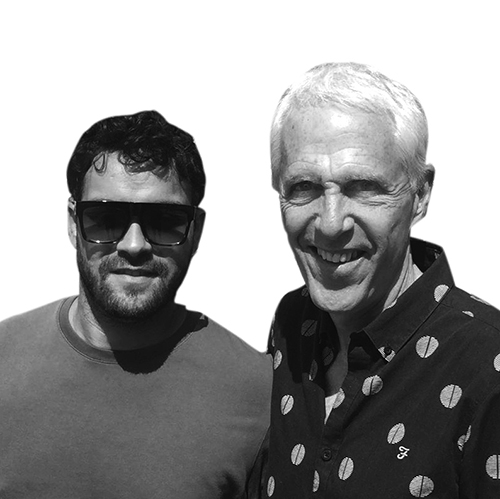
The filmmaker/theatre director couple Jazz Martinez-Gamboa and Stephen Bayly are the owners of the gorgeous Economía townhouse apartment, which offers guests an authentic slice of Havana’s old city.
Chill
Walk down to the docks and catch the ‘launch’ across to Casablanca. The tiny ferry threads its way between battered rusty freighters and massive white cruise ships. Once on the other side, walk through the sleepy village and wind your way up to the outsize statue of Christ at the top. It’s a magnificent view over the harbour.
Eat
If you visit the Instituto Superior de Arte (and you absolutely must), go on to Santy’s restaurant nearby for lunch. It’s a seafood paladar (family-run eatery) in an old shack right on the harbour, and serves superb fish, lobster and crawfish straight from the sea alongside supremely fresh sushi and sashimi.
Art
The Museo Nacional de Bellas Artes contains the entire history of Cuba seen through its art, a phenomenal way to understand more about the country. You can also stroll the streets of Fusterlandia, a neighbourhood in which self-taught artist José Fuster has over-decorated the houses, pavements and walls with tile mosaics.


